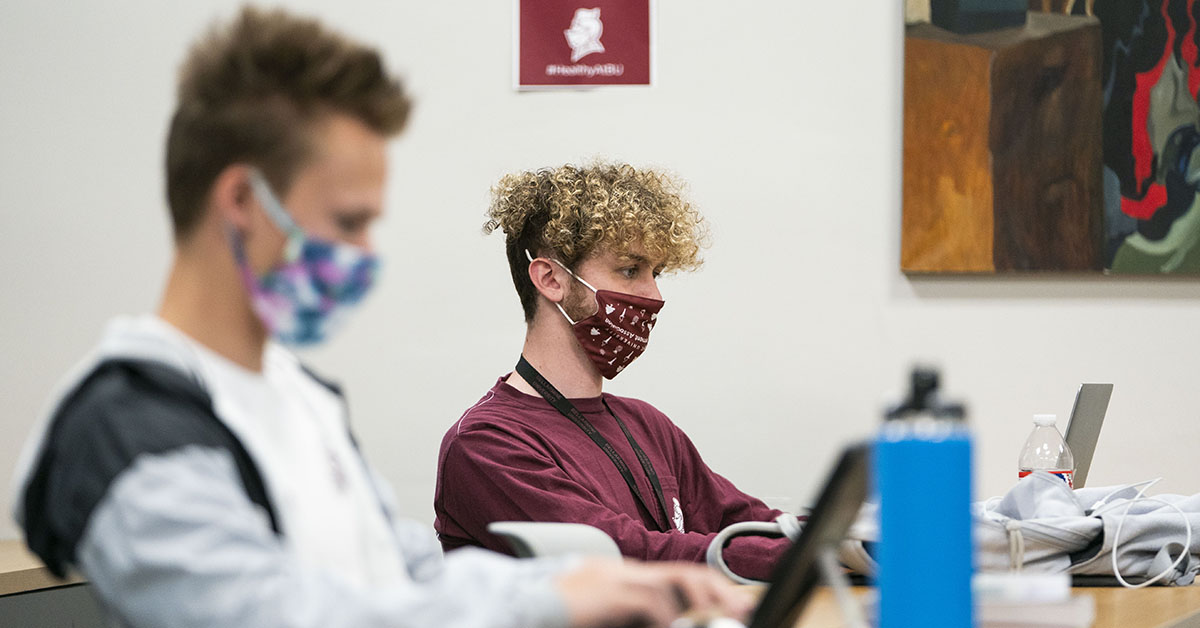
As Bellarmine University concludes its first semester in a pandemic, data from contract tracing and survey testing reveals there were no known COVID-19 transmissions from traditional in-person classes, formal campus events or use of public spaces such as the library or dining services.
Sean McGreevey, dean of students and head of Bellarmine’s Rapid Response Team, said the data instead connects cases most often to living situations, either at home with COVID-positive relatives or roommates, or to informal off-campus gatherings and social connections.
“Our findings are consistent with schools across the nation,” McGreevey said. “The safety measures, when properly and consistently implemented, are very effective at preventing the spread of COVID-19 in campus settings. That should give current and prospective students peace of mind.”
Bellarmine’s Welcome Back Plan requires cloth face coverings on campus, physical distancing, additional cleaning measures and a screening process before visitors may enter campus.
The university also developed a mix of class types that allows for optimal learning in a safe environment during the pandemic.
In-person classes are possible when the scheduled classroom can accommodate physical distancing. Online classes are taught completely online, but each includes synchronous, or “live,” elements. HyFlex (for “hybrid flexible”) classes blend in-person and online experiences. For example, half of the students might attend in person on Tuesdays, with the other half online, and the two groups would then switch on Thursdays. Students may also opt to take everything online.
Of the 1,070 courses offered in the Fall 2020 semester, 36 percent were HyFlex, 33 percent were online and 17 percent were completely in person. (The remaining 14 percent were more individualized offerings, such as clinicals.)
The class offerings have been popular with current students, with approval ratings averaging 75 percent or higher.
“I love my HyFlex classes,” said Trey Grevious, a senior majoring in communications. Three of his five courses were taught in the hybrid format, with each student meeting once per week in person and once online. His other two classes were taught completely online.
The HyFlex approach allows proper physical distancing but “still allows me to interact in person with my classmates,” Trey said, “and I appreciate that so much.”
Bellarmine also implemented a robust survey testing program in which students, faculty and staff are randomly selected, thereby identifying asymptomatic cases. The cases are updated weekly on the university’s public dashboard.
The Chronicle of Higher Education article noted that such survey testing has been critical in preventing the spread of COVID-19: “Coming into the fall term, colleges had wildly different testing strategies. Researchers are still studying the impact of those policies, but the top-line results are clear…continuing to test asymptomatic students throughout the term is necessary to identify and deal with outbreaks before they careen out of control.”
McGreevey said the results are definitive: The guidelines enabled a safer semester on campus.
“We profusely thank our students and their families for understanding the need for these protocols and carefully following them.”